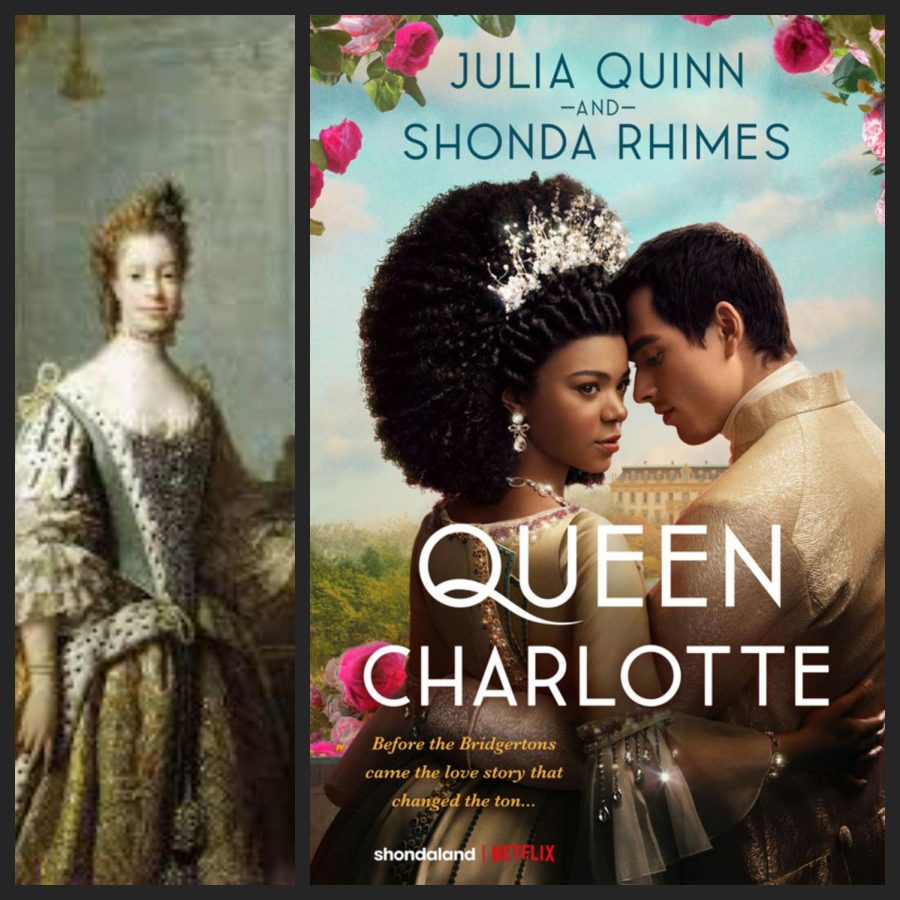The Real History of Queen Charlotte: The Brighton Series
Queen Charlotte on the left and Queen Charlotte and King George III from the Brighton series on the right
May 18, 2023
The Real History behind Queen Charlotte: A Brighton Story. The new series follows the royal matriarch as she falls in love with King George III and navigates his worsening mental illness.
When Princess Charlotte of Mecklenburg-Strelitz encountered King George III for the first time in 1761, she apparently “threw herself at his feet” and pleaded, prompting the English King to raise her up, embrace her, and carry her through the garden “up the steps into the palace,” as on spector recalled. The German princess wedded George a few hours later, becoming England’s newest queen, he sought her hand in marriage because he “needed a Queen and an heir as a matter of urgency” Charlotte landed in England and married George that same night, then two weeks later the held a joint coronation and a year later she gave birth to George IV of the first’s couple’s 15 children, and only 13 were able to reach adulthood. Even though they were married for political gain rather than love, Charlotte and George were still able to love each other and both the couple share a love for music that they would often do duets together.
Charlotte was in bad health after a long sea voyage, and she was so emaciated she could barely handle the weight of her diamond-encrusted bridal gown. Despite this unlucky start, Charlotte and George had a loving, flourishing relationship that lasted until the king’s mental illness severely changed his personality in the late 1780s. A new offshoot of Netflix’s hit historical drama “Bridgerton” explores the royal couple’s love affair. The six-episode limited series is titled “Queen Charlotte: A Bridgerton Story.”
King George III suffered a mental illness in 1788. The King both suffered physical pain and mental distress “including loquacity” in which he would talk until he foamed at the mouth. Unable to sleep, he spoke out of turn, accusing his wife of adultery. His Doctors had explanations for Georges’s sudden deterioration of health suggesting his behavior was genetic blood disorder or bipolar disorder. One of his physicians persuaded him by torturing him and other harsh methods, saying it was a cure for his illness as shown in the film and in real life.
There is a theory that Charlotte was black based on research by historian Mario de Valdes y Cocom. In a 1997 article published, he claimed that Charlotte was “directly descended” from Margarita de Castro. In the 15th century, a Portuguese noblewoman was linked to Afonso III and his Moorish companion Madragana. Valdes also cited “the African characteristics evident in so many of the queen’s portraits” as evidence for his theory, stating that “artists of that period were expected to play down, soften, or even obliterate features in a subject’s face, especially a woman’s, that were not considered to meet the standards of beauty for the times.”
Queen Charlotte was, in fact, activity interested in gossiping around “ton,” and the first known debutante party was held in her honor. The practice continued for decades until Queen Elizabeth II stopped the balls in the 1950s.


